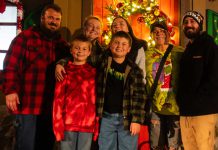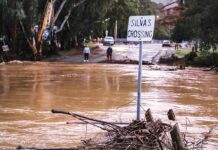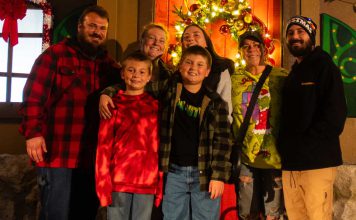
152, the name for the highway spanning Pacheco and Hecker passes, is also the official age of Gilroy. A pandemic hijacked our 150th celebration, but a group of local history buffs intends to make up for that loss with a monthly history column in the Gilroy Dispatch.
Our band includes Barbara Armenta, John Arvizu, Sean Barragan, Elizabeth Barratt, Kathy Chavez, Toby A. Echelberry, JoAnne Fierro, Robyn Houts, Phill Laursen, Ellen Marden, Mike Monroe, Steve Pattie, Patti Perino, Joe Robinson and Beth Wyman.
We invite you to join us with suggestions, corrections, photos and comments. You may already be engaged with a group such as the Miller Red Barn or a website like “The Gilroy Historical Society,” “Gilroy Gold,” “Remembering Gilroy” or “You Know When You’re From Gilroy When,” and we would enjoy any collaboration with such groups.
Maybe you’ve seen YouTube films about Gilroy’s history: “Stories of Gilroy’s Heritage” oral history films from The Historical Society, “The Gilroy Museum,” a virtual tour in English or Spanish. “Gilroy Hot Springs Documentary,” “History of the Gilroy Garlic Festival” by Visit Gilroy, “The Mass of Reconciliation” where the Bishop of Monterey apologized to our Native Americans for the suffering at the Missions, “Trains of Gilroy,” a 1947 film showing a locomotive rotating on Gilroy’s old turntable, “Stories of Service” films created by Gilroy students of local veterans, great drone footage in “Coyote Lake near Gilroy” and “Beautiful Green Day in Gilroy, CA.” You can find several films of Gilroy Gardens, and even “KFAT Radio.”
At the Museum you can purchase “Life in Gilroy,” a 1950 film showing probably most people in Gilroy, and “Scenes of Gilroy Past” with the Gymkhana, Gilroy National Guard, a 1926 Armistice Day Parade and mock battle, and Gilroy High School Football defeating Hollister.
Be sure to visit the Gilroy Museum at Fifth and Church streets, where you can view informative displays, and you can see microfilm and even hard copies of almost every newspaper ever printed in Gilroy. Maybe you’ll be like Ruben Perez who visits regularly to photograph Gilroy Dispatch articles and post them on the Internet. You can see a great aerial photo from the 1930s that looks over the railroad yard toward Monterey Street, and a panorama of Gilroy Hot Springs that’s more than a century old. The Museum has Family Files; stories, clippings and photos—in some cases even books—about Gilroy families. Have you considered helping the Museum create or add to a file about your family?
So please dust off those old albums and let us know about images you have of people and places from Gilroy’s past—if you don’t have the means to scan them (we suggest scans be done at 300dpi), we can probably do that for you and return them safe and sound. Perhaps you have some tools, equipment or other artifacts we could photograph and use to quiz readers. Pictured is an example from Ellen Marden. What do you think this tool was used for?
Questions, comments and other information can be sent to gi***********@***il.com.













